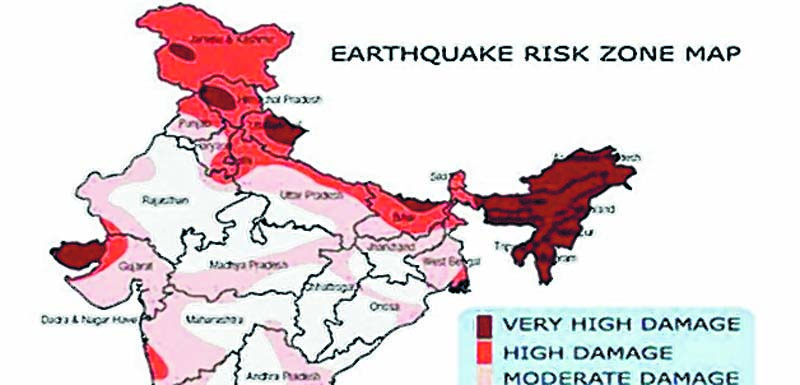 New Delhi, July 30 2017: Twenty-nine Indian cities and towns, including Delhi and capitals of nine States, fall under “severe” to “very severe” seismic zones, according to the National Centre for Seismology (NCS).
New Delhi, July 30 2017: Twenty-nine Indian cities and towns, including Delhi and capitals of nine States, fall under “severe” to “very severe” seismic zones, according to the National Centre for Seismology (NCS).
A majority of these places are in the Himalayas, one of the most seismically active regions in the world.
Delhi, Patna (Bihar), Srinagar (Jammu and Kashmir), Kohima (Nagaland), Puducherry, Guwahati (Assam), Gangtok (Sikkim), Shimla (Himachal Pradesh), Dehradun (Uttarakhand), Imphal (Manipur) and Chandigarh fall under seismic zones IV and V .
These cities have a combined population of over three crores .
The Bureau of Indian Standards (BIS) has classified different regions in the country into zones II to V, taking into consideration earthquake records, tectonic activities and damage caused, the Director of the NCS, Vineet Gauhlat, said.
The NCS, which records earthquakes and carries out studies pertaining to micro zonation of cities, comes under the India Meteorological Department (IMD).
Seismic micro zonation is the process of subdividing a region into smaller areas having different potential for hazardous earthquake effects.
Zone II is considered the least seismically active, while Zone V is the most active.
Zone IV and V fall under “severe” to “very severe” categories respectively.
Zone V includes the entire North Eastern region, parts of Jammu and Kashmir, Himachal Pradesh, Uttarakhand, the Rann of Kutch in Gujarat, parts of north Bihar and the Andaman and Nicobar archipelago.
Parts of Jammu and Kashmir, Delhi, Sikkim, northern Uttar Pradesh, West Bengal, Gujarat and a small part of Maharashtra fall under Zone IV.
Bhuj, which was struck by a massive earthquake in 2001 in which 20,000 people were killed, Chandigarh, Ambala, Amritsar, Ludhiana and Roorkee fall under zones IV and V.
Source: The Sangai Express

